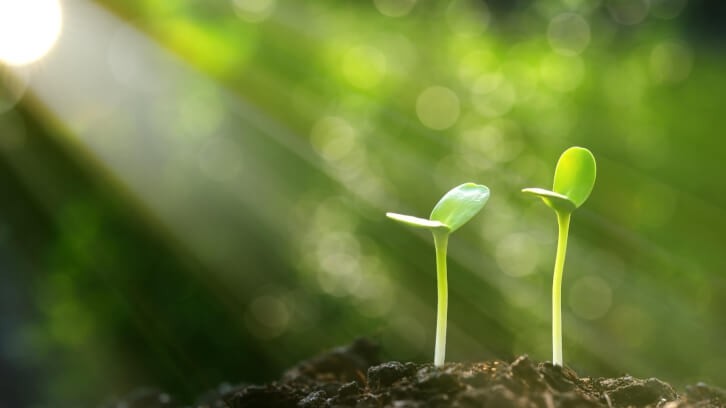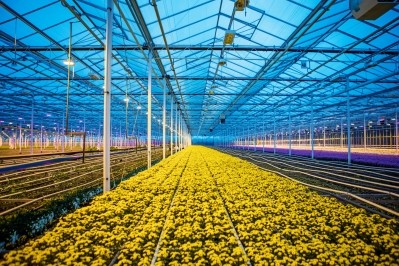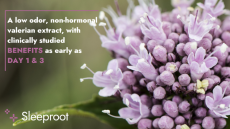Finding delicate balance along a volatile botanical supply chain

Sales of herbal supplements soared during the pandemic, and consumption continues to surpass pre-pandemic levels even with market corrections, logging 4.4% year-on-year growth in 2023, according to Nutrition Business Journal data.
As webinar moderator Stephen Daniells, editor-in-chief of NutraIngredients-USA noted, solid growth in the category is great for business but also puts the botanical supply chain under immense pressure.
“Not only have we seen runs on botanicals like elderberry, but the whole chain experienced disruptions in shipping during the pandemic,” he said. “Add on to this the eternal risk of adulteration, the global threat of climate change and socioeconomic shifts and geopolitical issues in key botanical growing regions, and you have as this British master of understatement would say a tricky situation.”
Participants included Travis Borchardt, vice president of regulatory affairs & QC/QA at Nature’s Way; Thomas Brendler, PhD, founder and CEO of Plantaphile; Stefan Gafner, PhD, chief science officer at American Botanical Council; and Frank Jaksch, CEO of Ayana Bio.
Lessons learned from disruption
Between 2020 and 2021, the biggest driver of disruption in the botanical supply chain was demand, perhaps best represented by the shortage of immunity-boosting botanical elderberry.
“We sold nearly double what we sold in 2019 in terms of volume, and we could have sold probably another 50% to 75% more if we would have had the material,” said Borchardt of Nature’s Way.
These types of pandemic supply challenges, he explained, cemented the importance of having multiple, geographically-diversified sources for the company’s most strategic herbs and securing strategic relationships with partners throughout the supply chain from seed to bottle.
“It was a lesson in becoming much more intimately involved and knowledgeable about the global supply chain,” he added, drawing attention to the importance of “striking that really delicate balance between investing in inventory to meet long-term growth expectations and avoiding overinvestment in short-lived trends.”
Beyond a pandemic virus, there are plenty of other global influences that will continue to disrupt supply and require risk mitigation.
“Even though COVID is gone, we're now looking at effects of what's going on in the world on a geopolitical level, all the way from trade wars to actual armed conflicts, giving us the same situation over and over,” Brendler said.
To mitigate risk, he suggested that companies place orders well in advance despite forecasting challenges and develop a supply chain built on trust and relationship. In addition, he said it is important to understand the wider stakeholder, competitor and supplier landscape and consider using specialty ingredients in more than one product in the brand portfolio.
Botanicals under threat
Spikes in demand in turn spawn their own threats along the supply chain, ranging from economically motivated adulteration to the extinction of species and livelihoods.
Borchardt reviewed the maturation of the regulatory environment surrounding herb identity testing, fit-for-purpose methods and supply chain traceability, while Gafner noted that there is ample evidence that adulteration continues to plague the industry whether in the form of substitution, dilution or improper extraction methods—all of which put structure-function claims into question.
To ensure that herb received matches herb on label, webinar participants presented strategies ranging from publishing monographs with sustainability data and conservation status to ensuring that adulterated materials do not make their way back into the supply chain.
Regarding species and native growing habitat threatened by climate change, Gafner referenced the adage that climate change does not discriminate among botanicals but said that overall, plants that grow at higher altitudes like rhodiola and arnica are probably at the highest risk.
“They can't go further up, and there's pressure from plants that grow at lower elevation that move into higher elevation,” he said. “I also would say that plants that grow in boglands in wet areas [like sundew] definitely have a lot of pressure.”
Cue plant cell cultivation
Ayana Bio presented its plant cell cultivation technology (growing plants as single cell organisms in tanks) as an alternative that takes complicated forecasting, long harvest cycles and variation in bioactives out of the equation.
“The main advantage that you have with plant cell is the ability to essentially control what the plant cell does,” Jaksch said. “My heart has always been in botanicals, but consistently producing the bioactives or the phytochemicals that are found in botanicals is challenging under even best conditions.”
Taking rhodiola—which fortifies its bioactives in response to harsh growing conditions at high altitudes—as example, Jaksch said Ayana Bio should be able to produce rhodiola plant cells at a scale that will fill gaps and potentially allow for the expansion of the market.
Asked about how Nature’s Way views this technology, Borchardt acknowledged that it is extremely interesting in terms of sustainability, quality and consistency but noted Nature Way’s 55-year botanical legacy.
“We strongly believe in the power of plants and turn to nature for our inspiration wherever we look, but it would be foolish for us to not monitor this closely and understand if this is an opportunity as it pertains to things like availability, cost, scale, those sorts of things,” he said.
In closing, webinar participants re-emphasized the critical nature of building relationships throughout the supply chain, especially ones that value farmer livelihoods as much as the consumer.
















